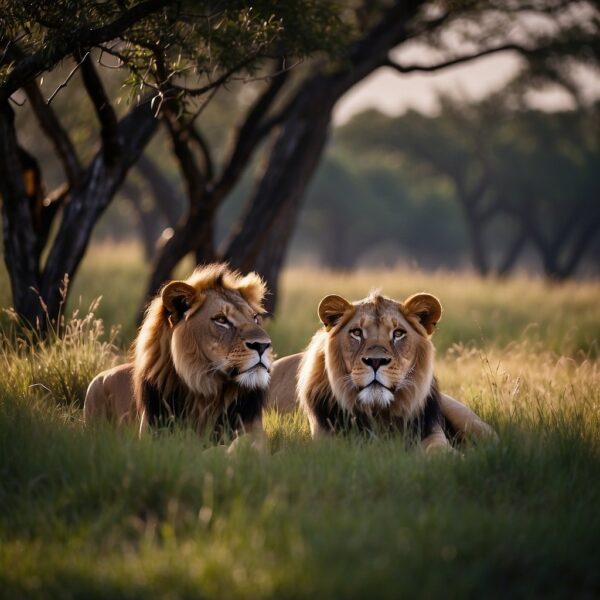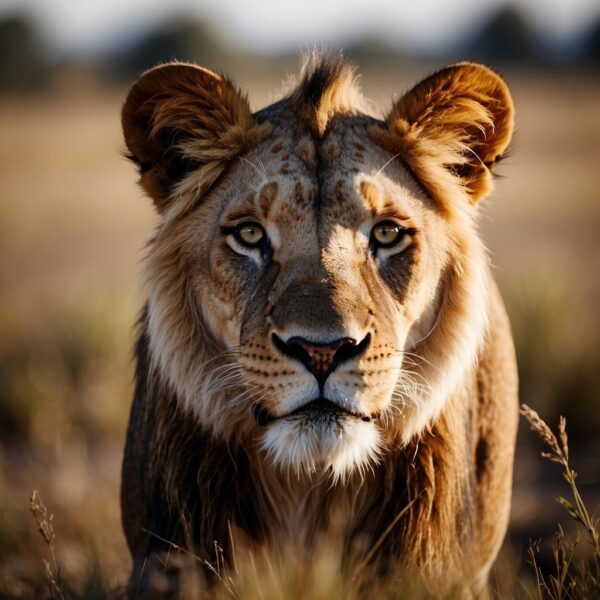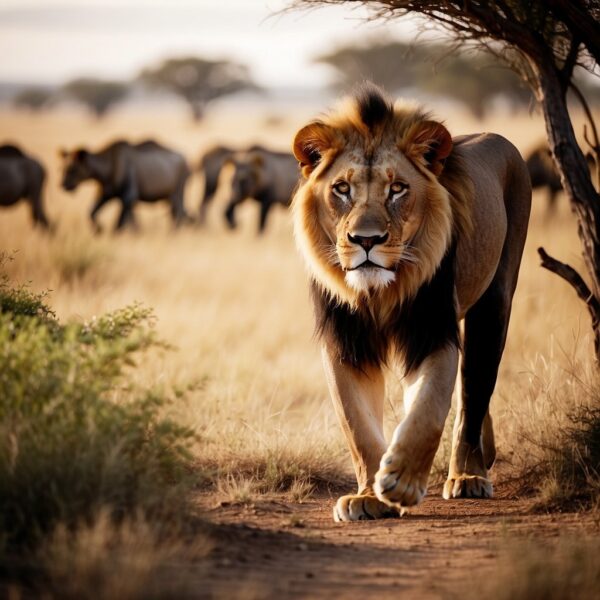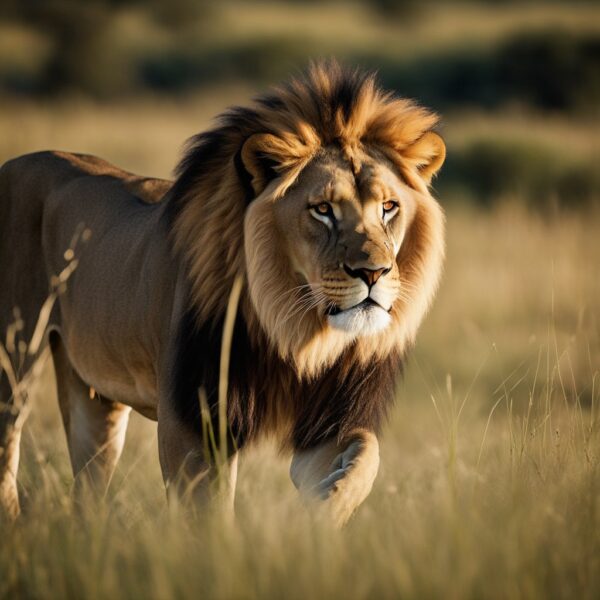
African Lion Habitat Distribution
African lions, the majestic creatures often revered as symbols of courage and strength, primarily reside in the savannas and grasslands of sub-Saharan Africa. These large cats are known for their distinctive physical characteristics, such as the male’s mane and the female’s expert hunting abilities. African lions live in a range of habitats across the continent, avoiding deserts like the Sahara but thriving in regions with adequate food sources and cover for hunting.
Their social structure is unique among the big cats, with lions living in groups known as prides. These prides are complex social units that can vary in size but typically consist of related females, their offspring, and a small number of adult males. The habitat of African lions ranges from Kenya and Tanzania to Botswana, Zambia, South Africa, Namibia, Ethiopia, and Uganda. With the expanding human population leading to habitat loss and conflicts, conservation efforts are crucial in maintaining the populations of these iconic cats in the wild.
Key Takeaways
- African lions inhabit sub-Saharan Africa’s savannas and grasslands.
- They live in social groups called prides, consisting mainly of related females and their cubs.
- Conservation measures are essential to protect their habitats and ensure their survival.

where African Lion live: Distribution and Range
The African lion’s habitat extends across sub-Saharan Africa, with populations thriving in national parks and game reserves. Their range historically covered much more extensive territory, but it has significantly receded over time.
Habitats Across Africa
African lions are predominantly found in savannas, grasslands, and woodlands where prey is abundant. They have adapted to a variety of climates across Africa, although they are mostly absent from tropical rainforests and deep deserts. The habitats they occupy are critical for their hunting methods and social structures.
Sub-Saharan Africa
Lions are present in several countries within Sub-Saharan Africa, including Tanzania, Kenya, Botswana, South Africa, Namibia, Mozambique, and Ethiopia. Each region hosts ecosystems befitting the lions’ survival, from the Serengeti plains in Tanzania to the Okavango Delta in Botswana.
Prides and Territories
Lions are social felines usually residing in groups known as prides. A pride’s territory can range evidently, spanning up to several hundred square kilometers based on the fertility of the land and availability of prey. Giraffes, zebras, and wildebeests are common prey within these territories.
Lions Outside of Africa
While the African lion is quintessentially linked with the African continent’s landscapes, a small population of Asiatic lions (a subspecies of the African lion) persists in India’s Gir Forest. The West African lion and the now-extinct Barbary lion are examples of lions that once roamed outside the typical sub-Saharan range.

where African Lions live: Conservation Status and Efforts
As apex predators, African lions play a crucial role in their ecosystem, but they face significant challenges due to human activities and environmental pressures. Their conservation status is a concern, with various efforts underway to address the decline in their populations and habitat.
Population Decline
The African lion is currently listed as “vulnerable” on the IUCN Red List, experiencing a worrying decline in numbers. Over two decades, lion populations increased by 12% in southern African countries such as Botswana, Namibia, South Africa, and Zimbabwe. However, they have declined by 60% in West, Central, and East Africa. Factors contributing to this decline include habitat loss, conflicts with humans, and, in some areas, trophy hunting.
Habitat and Human Conflict
Habitat loss is a significant threat to lions. As humans encroach on lion habitats for agriculture and settlements, lions are forced into smaller areas, often leading to human-lion conflict. These conflicts arise when lions attack livestock and occasionally humans, prompting retaliation. Conservation groups stress the importance of creating strategies to reduce these encounters, protect community livelihoods, and secure lion populations.
Conservation Strategies
Conservation strategies are multifaceted, involving protection of habitats, mitigating human-lion conflict, and enforcement of anti-poaching measures. Conservation groups work to establish and maintain corridors to connect fragmented habitats, ensuring genetic diversity and viable lion populations. Educational programs aim to inform communities about coexistence and the value of lions to ecosystems and economies. Anti-poaching patrols and technology are also harnessed to prevent illegal hunting of not only lions but also their prey like the black and white rhinoceros. Legal frameworks have been instituted to regulate trophy hunting, when permitted, to ensure it does not further endanger lion populations.

Where AFrican Lions Live: Frequently Asked Questions
In this section, readers will find concise answers to common inquiries about the living environment, diet, and other aspects of African lions.
In which habitats can African lions be commonly found?
African lions predominantly reside in savannas, grasslands, and open woodlands where prey is abundant.
What is the geographic distribution of African lions in Africa?
They are spread across sub-Saharan Africa with populations in countries such as Kenya, Tanzania, Botswana, Zambia, South Africa, Namibia, Ethiopia, and Uganda. Sightings have also occurred in West Africa.
What is the staple diet of an African lion?
African lions are carnivores with a diet primarily consisting of large ungulates, including zebras, antelopes, and wildebeests.
Are there different subspecies of lions in South Africa?
Biologists recognize several subspecies of lions in Africa. The Southern African lion, one such subspecies, is native to Southern Africa.
What are some interesting characteristics of African lions?
Males exhibit sexual dimorphism with prominent manes that darken as they age, offering protection during conflicts. They have a tawny coat and are muscular with a barrel-chested physique.
What is the conservation status of the African lion population?
The African lion is classified as Vulnerable, with an estimated population of around 20,000 individuals, due to threats like habitat loss and conflict with humans.